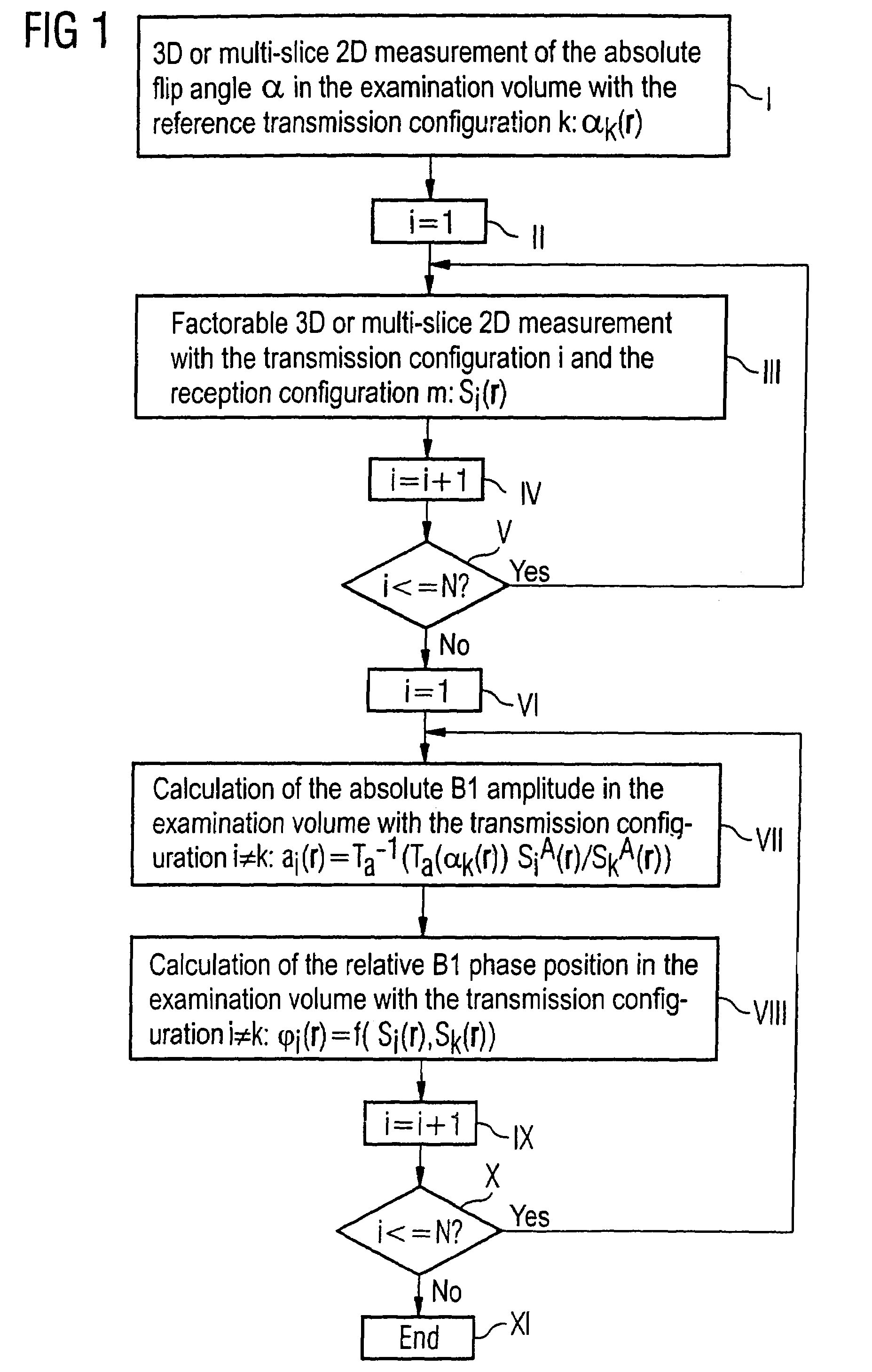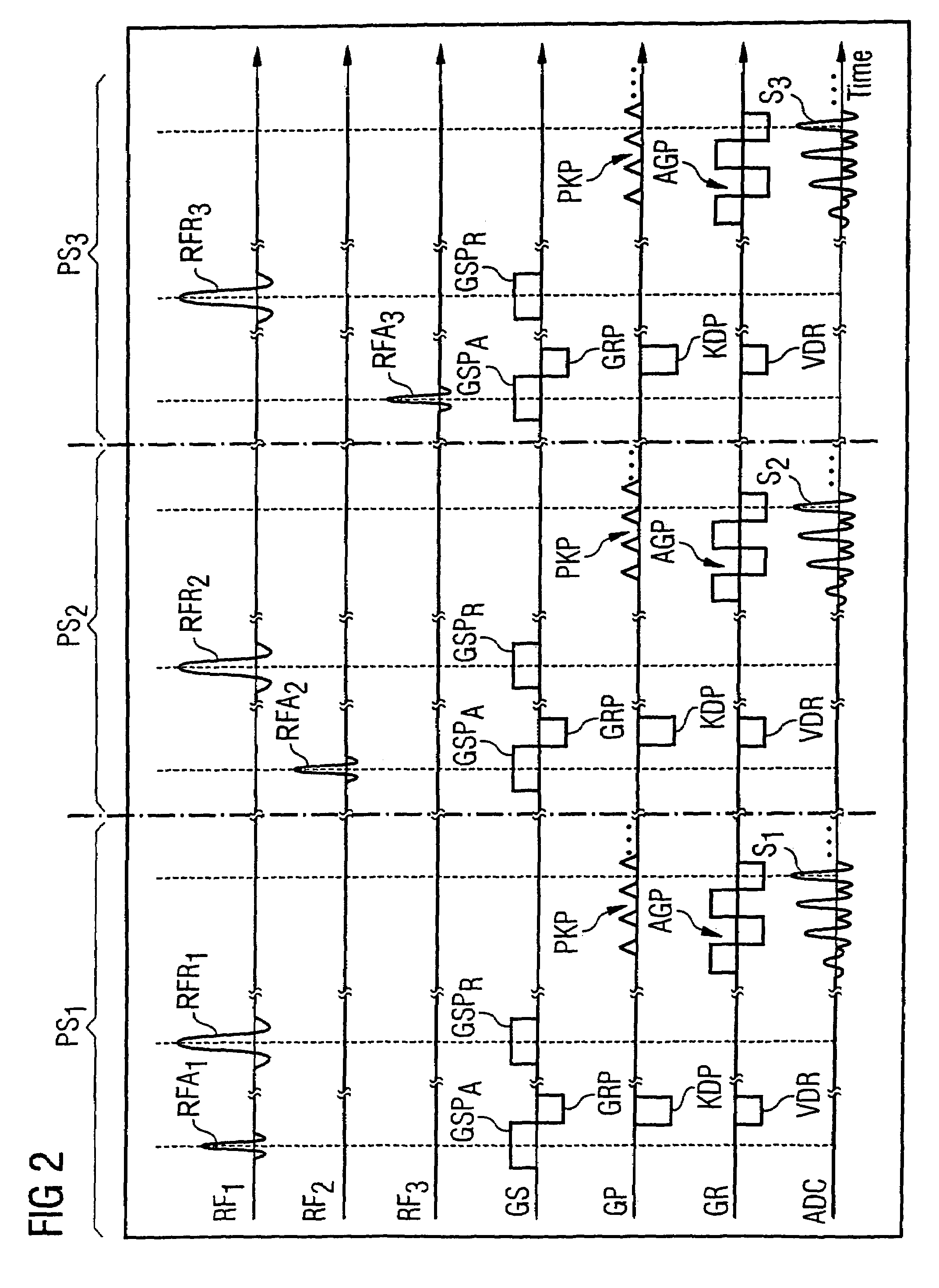Method and magnetic resonance system for determining the flip angle distribution in a volume of an examination subject
a magnetic resonance system and volume technology, applied in the field of method and magnetic resonance system for determining the flip angle distribution in the volume of an examination subject, can solve the problems of subject-specific optimization (i.e. an optimization directly adapted to the current examination subject), inability to achieve the effect of adjusting the optimization, and affecting the quality of the results
- Summary
- Abstract
- Description
- Claims
- Application Information
AI Technical Summary
Benefits of technology
Problems solved by technology
Method used
Image
Examples
Embodiment Construction
[0055]A possible measurement and calculation process according to an embodiment of the inventive method is shown in FIG. 1 using a workflow plan.
[0056]In step I the absolute flip angle distribution αk(r) in the examination volume is thereby initially measured with the reference transmission configuration k with a three-dimensional or multi-slice two-dimensional method. This can ensue, for example, with the method described in United States Patent Application Publication 2005 / 0073304 A1 or 2004 / 0164737 A1. Subsequently, a control variable i is initially set to 1 in step II. In a subsequent loop the factorizable three-dimensional or multi-slice two-dimensional measurements are then respectively implemented with all transmission configurations i=1 through N (as already described above). The result are [sic] magnetic resonance images, wherein the spatial image signal distribution can be designated as Si(r). The same reception configuration should thereby respectively be selected.
[0057]T...
PUM
 Login to View More
Login to View More Abstract
Description
Claims
Application Information
 Login to View More
Login to View More - R&D
- Intellectual Property
- Life Sciences
- Materials
- Tech Scout
- Unparalleled Data Quality
- Higher Quality Content
- 60% Fewer Hallucinations
Browse by: Latest US Patents, China's latest patents, Technical Efficacy Thesaurus, Application Domain, Technology Topic, Popular Technical Reports.
© 2025 PatSnap. All rights reserved.Legal|Privacy policy|Modern Slavery Act Transparency Statement|Sitemap|About US| Contact US: help@patsnap.com



